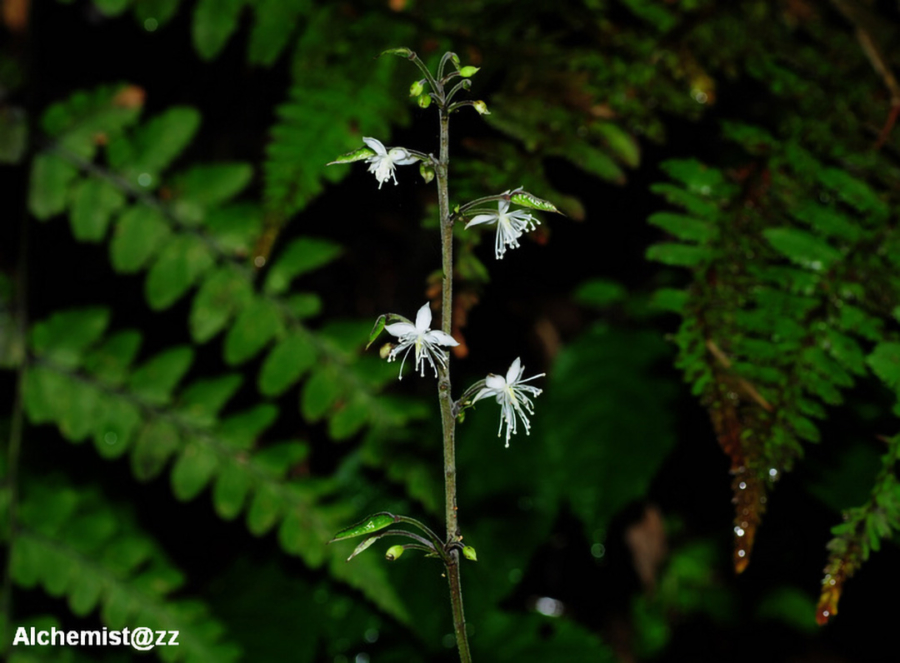- Scientific Name: Beesia calthifolia (Maxim. ex Oliv.) Ulbr.
- Ref: Notizbl. Bot. Gart. Berlin-Dahlem. 10:872. 1929
- Synonyms: Cimicifuga calthifolia Maxim. ex Oliv., Beesia cordata Balf.f. & W.W.Sm., Beesia elongata Hand.-Mazz.
- Chinese Common Name: 铁破锣 tiě∙pòluó
- Family: Ranunculaceae
- Genus: Beesia
- Distribution: Wet places in valleys, forests; 1400–3500 m. S Gansu, N Guangxi, Guizhou, W Hubei, W Hunan, S Shanxi, Sichuan, NW Yunnan [N Myanmar].
- Photo: Mt. Emei, Sichuan
Rhizome to 10 cm, 3--7 mm in diam. Scapes more than 14 cm, to 58 cm at fruiting, basally glabrous, apically densely pubescent. Basal leaves 2--4, long petiolate; petiole (5.5--)10--26 cm, slightly widened, glabrous; leaf blade reniform, orbicular-ovate, or deeply cordate at base, (1.5--)4.5--9.5 × (1.8--)5.5--16 cm, both surfaces glabrous, rarely pubescent abaxially at veins, margin dense with 40--50 teeth on each side, apex rounded, shortly acuminate, or acute. Inflorescence cymose, 5.5--9.5 × 1.5--2.5 cm; bracts usually subulate, sometimes lanceolate, rarely spatulate, 1--1.5 mm, glabrous. Pedicel 5--10 mm, densely spreading pubescent. Sepals white or pinkish, narrowly ovate or elliptic, 3--5(--8) × 1.8--2.5(--3) mm, glabrous, apex acute or blunt. Stamens shorter than sepals; anthers ca. 3 mm in diam. Follicle 1.1--1.7 cm, flat, lanceolate-linear, middle part curved, lower part 3--4 mm wide, sparsely pubescent near base, otherwise glabrous, with ca. 8 obliquely transverse veins; persistent style 1--2 mm. Seeds several, ca. 2.5 mm, obliquely corrugate. Fl. May--Aug, fr. Jul--Sep. 2n = 16*, 32*. (Flora of China)
